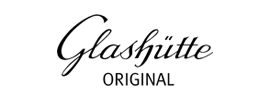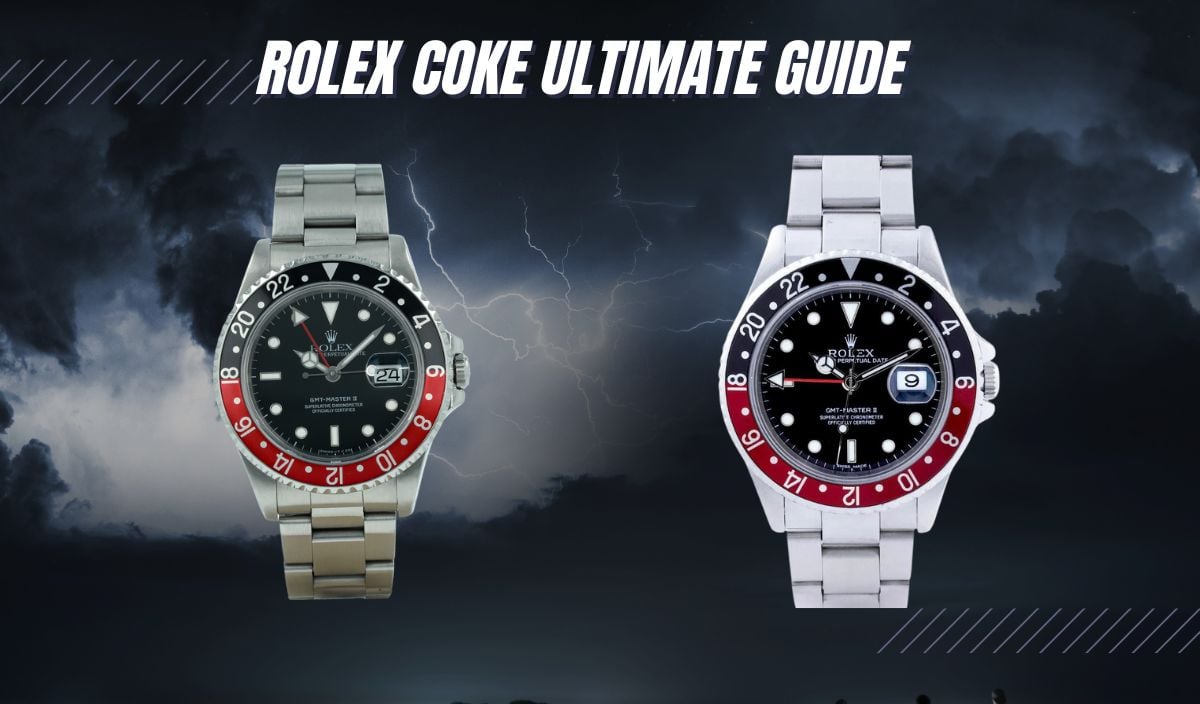
The ULTIMATE Guide To The Rolex “Coke” GMT-Master II
Rolex has solidified its place in the watch industry as the default luxury watch. Proving to be the most prominent brand in terms of market share, the brand’s nickname, “The Crown”, is not baseless. They have produced some of the most iconic watches of the 20th and 21st centuries, such as the Submariner, Explorer, and the GMT-Master.
Different iterations of these watches have received nicknames from collectors over the years, including the red and black bezeled GMT-Master II referred to as the “Coke” GMT, after the iconic soft drink.
The Rolex GMT-Master
Even though Rolex is one of the top luxury brands today, its origins were centered around creating watches as practical tools. During World War I, they produced trench watches, some of the first purpose-built wristwatches, and distributed them to armed forces.
In 1926, they produced their first “Oyster” watch, a watch case that allowed for greater dust and water resistance, ensuring durability in more harsh environments. Famously, they marketed this by putting the watch in tanks of water in shop display windows, and swimmer Mercedes Gleitze swam the English Channel in 1927 with a Rolex Oyster on her wrist.
Fast forward to the 1950’s and purpose built sports watches became incredibly popular. While dive watches and chronographs usually get most of the attention, global air travel became more accessible and facile, and international commerce became more common. In 1954, Rolex produced the Rolex GMT Master reference 6542.
The original reference 6542 GMT Master had a 24-hour hand that mirrored the main time and an adjustable 24-hour bezel. The bezel was the only aspect of the watch that allowed for the tracking of an additional time zone. Developed in partnership with PanAm Airlines, the ability to track Greenwich Mean Time of Coordinated Universal Time was necessary for related paperwork, flight tracking, and record keeping.
The First Rolex “Coke” GMT
In 1983, Rolex released the GMT-Master II reference 16760. Produced alongside the GMT-Master until its discontinuation in the late 1990s, the GMT-Master II introduced the independently adjustable hour hand with the calibre 3085. Now, the main time, 24-hour hand, and bezel could be set separately, allowing the tracking of three timezones.
The 3085 did give up the quick adjust date function to gain the adjustable hour hand. The date on GMT-Master II models is adjusted by adjusting the local hour hand. The original 16760 was nicknamed the “Fat Lady,” due to the extra thickness required by the movement.
It also had a wider case, bezel, and crown. While the case was larger, it was only 100 meters water-resistant, which has been the standard for the GMT-Master II to this day. The 16760 was only available in steel with an Oyster or Jubilee bracelet.
The 16760 was the first GMT-Master model to receive a sapphire crystal, white gold hands, and indices, eventually becoming standard across the entire Rolex lineup. The 16760 had tritium for the lume and was the model that made the Coke bezel iconic, as it was the only colorway available for the reference.
The End of the “Fat Lady,” Introducing the 16710
The 16760 was replaced by the 16710 when the former ceased production in 1988. The new calibre 3185 inside allowed for the same functions as the 3085 but was much slimmer, allowing the 16710 to have the same form factor as the GMT-Master and the contemporary Submariner at the time.
Case Comparison
Comparing the two models, the 16760 “Fat Lady” measures 39.14mm wide, excluding the crown, 47.6mm lug-to-lug, and 12.6mm thick. The 16710T (tritium dial) measured 39mm wide, excluding the crown, 47.11mm lug-to-lug, and 12mm thick. Oddly enough, the 16710T is slightly wider, including the crown, measuring 42.19mm wide compared to the 16760’s 42.06mm width, including the crown.
16710 Models and Evolution
The Rolex GMT-Master II reference 16710 with the “Coke” red and black bezel was produced from 1989 to 2005. Available in stainless steel, this time, the 16710 was available with red and black (16710A), red and blue (16710B), and all-black bezels (16710N), along with both Oyster and Jubilee bracelets.
Dial Variations
The hands and markers were still made of white gold, with the lume being made of tritium from 1989 to 1997, and were demarcated with the T<25 indications at the bottom of the dial. In 1998, Rolex switched the 16710 to Luminova, with the “Swiss Dial” marking at six o’clock.
Some Luminova models made in 1998 still had the T<25 on the dial. Finally, in 2000, the GMT-Master II received Super-LumiNova for the hands and markers, with a “Swiss-made dial” indicated underneath the six o’clock index. Towards the end of the 16710’s production, there was also the introduction of the “Stick Dial.”
Traditionally, the GMT-Master II had a Roman number two. During the transition period between the 3185 and 3186 movements, Rolex introduced a rare variation where the II was written as two straight lines, hence the nickname.
Bracelet, Crystal, and Case Evolutions
Another evolution that happened over time was the addition of solid end-links in 2000. In 2003, the laser-etched crown logo into the crystal was added, along with the removal of the lug holes with the late Y-series serial numbers.
In 2007, modern plastic certificates and warranty cards were introduced, along with the upgraded caliber 3186 with the Z and M-series serial numbers, which included the upgrade to a Parachrom hairspring.
Who is a GMT-Master II For?
Without a doubt, Rolex makes some of the most reliable mechanical watches available. They have become the gold standard in tool-oriented timepieces. If owning a reliable watch capable of tracking multiple time zones is a must, one would likely not go wrong by purchasing a Rolex GMT-Master II of any generation.
For the 16760 and 16710 references, in particular, they are currently for dedicated collectors of vintage and late model Rolex. While the “Pepsi” variant may be the most famous, the “Coke” bezel was the only bezel available for the 16760.
Additionally, the red and black bezel 16710 continues that tradition. For collectors who like to stay close to the original models, the red and black bezel is the way to go for a GMT-Master II. With the availability of modern Rolex models being inconvenient at best, some first-time Rolex buyers have turned their attention to discontinued and used models.
While current market prices are more than new GMT-Master II models in steel, they are more stable and available than a GMT-Master II at retail. It is impossible to predict future prices, but history suggests prices on discontinued models, especially those several years out, will be relatively stable.
While there are many potential upsides of any Rolex model, collecting vintage Rolex watches has its downsides. If one is accustomed to modern watches, the character of the bracelets and clasps are markedly different.
16760 and early 16710 Coke bezel GMT Master II watches will have hollow end-links, and all 16760 and 16710 will have stamped clasps, both of which will make the bracelets feel significantly less substantial compared to modern watches.
Additionally, the aluminum bezels are not as scratch and fade-resistant as modern ceramic. Many “Coke” bezels have aged well, as the paint is not as susceptible to fading, but they still will not fare as well as modern ceramic.
A downside of modern ceramic bezels is that they are more likely to shatter with hard impacts and are more costly to replace compared to aluminum, even compared to finding vintage correct OEM aluminum bezels.
Alternatives to the Rolex Coke GMT
If a Rolex Coke GMT is not in the cards for any number of reasons, but the black and red bezel is appealing, here are some more easily attainable options to consider.
Timex M79 Automatic (ref. TW2U83400ZV)
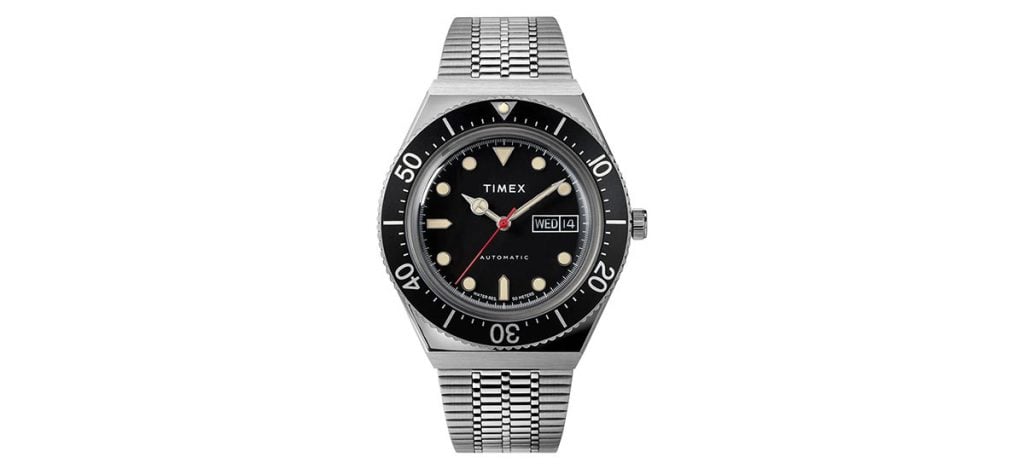
If the idea of a vintage watch is appealing, and you enjoy the color scheme, but the prices of a vintage Rolex are far from possible, the Timex M79 should be considered. With a thin steel bracelet, aluminum bezel, and lightweight, the Timex M79 will mimic a great deal of the look and feel of a vintage watch.
The two-tone red and black bezel also adds to the vintage appeal. Unfortunately, this model only has the time, day, and date functions, forgoing multi-timezone tracking abilities. The Timex M79 measures 40mm wide, 14.5mm thick, and has an 18mm lug width.
The dial is covered with an acrylic crystal and is rated to 50 meters of water resistance. Inside is a Miyota automatic movement with a 40-hour power reserve and can be hand-wound. The Timex M79 delivers in terms of style and budget but is not as durable or functional as other timepieces discussed in this article.
The Timex M79 Automatic retails for $289.
Davosa Ternos Ceramic GMT “Coke” Bezel (ref. 161.590.90)
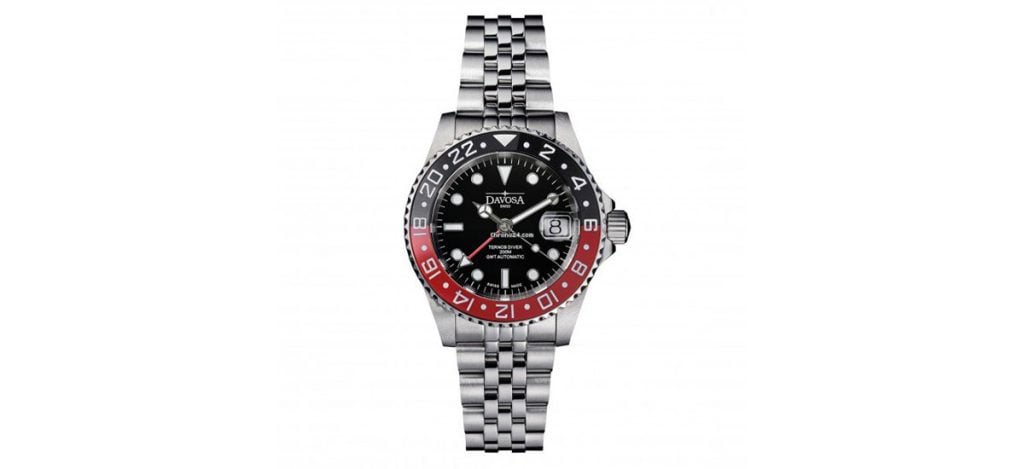
The Davosa Ternos Ceramic GMT offers a number of significant upgrades over the Timex M79. Firstly, the Davosa has the multi-timezone functionality the Timex lacks. The SW330 movement inside allows for independent adjustability of the 24-hour hand, making it a “caller” style GMT, making alternate timezones easier to track from home.
Additionally, the Davosa has a water resistance rating of 200 meters, making it more than capable of handling aquatic adventures. The Davosa Ternos Ceramic GMT reference 161.590.90 measures 40mm wide, 47.9mm lug-to-lug, and 12.2mm thick.
The ceramic indication in the name refers to the bezel, adding the red and black color scheme to a ceramic bezel, something Rolex has not done yet. The Davosa Ternos also features a sapphire crystal with magnifying Cyclops for the date window.
While definitely more premium than the Timex, the Davosa is still significantly more affordable than the Rolex, retailing at $1399.
Bell & Ross BR 03-93 GMT (ref. BR0393-BL-ST/SCA)
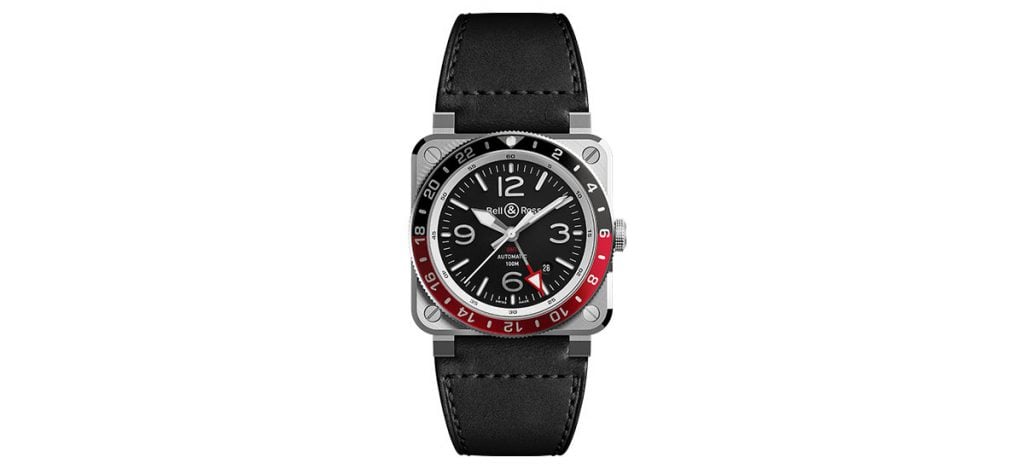
The black and red color scheme has its own appeal, but it is understandable how seeing that scheme in the same shape can become commonplace. The Bell & Ross BR 03-93 GMT offers something different, presenting a GMT package in the signature Bell & Ross square shape.
The BR 03-93 GMT measures 42mm wide, 52mm lug-to-lug, 13.5mm thick, and has a 24mm lug width. Inside is the BR-Cal303, based on the ETA 2893-2, offering a 42-hour power reserve and a 28,800 beat rate.
The dial is covered by a sapphire crystal with an anti-reflective coating, and the case offers 100 meters of water resistance. Again, the movement provides quick adjustment of the GMT hour hand, making it a caller-style GMT watch. With its own unique aviation-inspired design, the inspiration of this BR 03-93 GMT reference is clear but manages to have its own character.
The Bell & Ross BR 03-93 GMT retails for $4200.
Steinhart Ocean 39 GMT (ref. 103-1153)
Explore the
Biggest Pre-Owned Collection of Luxury Watches
While not original in its design, Steinhart offers a great deal of value for the prices they charge. Measuring 39mm wide and 13mm thick, with a 20mm lug width, this stainless steel watch has an SW330-2 élaboré GMT movement inside, allowing for independent adjustment of the 24-hour hand.
Covering the matte black dial is a sapphire crystal with a date magnifier, and the red and black bezel is made of ceramic. The case is rated to 300 meters of water resistance. Steinhart does offer a variety of options as well, including a jubilee bracelet and a larger 42mm variant.
With that, the case design is quite flat, offering little curvature, making the watch wear a little larger than the dimensions may suggest. Additionally, the clasp, while functionally, is not as advanced as many on the market today. While some brands costing much more use similar clasps, other more affordably priced watches have better clasps.
The Steinhart Ocean 39 GMT retails for around $700.
Squale 30 Atmos Black/Red GMT Ceramica 1545 Coke Bezel
Squale has a storied history of making durable dive watches since the 1950s. Many have more original designs, but others, like the 30 Atmos seen here, stick to more mainstream designs. While clearly very similar to the classic design, the case has broader lugs and a large screw-down crown as distinguishing features.
Additionally, the stick hands and square seconds hand lume pip add their own character. The stainless steel case measures 40mm wide, 20mm lug width, 12.5mm thick, and 47mm lug-to-lug. Inside is either an ETA 2893-2 or Sellita SW330-1, depending on movement availability.
Both movements offer quick adjustment of the GMT hand and a date function. The matte black dial is under a sapphire crystal, and the black and red bezel is made of ceramic. The 30 Atmos refers to the water resistance, meaning the watch is tested to 300 meters.
The Squale 30 Atmos Black/Red GMT Ceramica retails for $799.
Conclusion
Rolex has undoubtedly been a market leader for decades, especially when it comes to tool-oriented watches. The design of the GMT-Master II has made it the standard in regard to multi-timezone timepieces. The release of the 16760 ensured not only the GMT-Master II’s place in history but also the red and black “Coke” bezel.
This has made Coke bezel Rolex GMT-Master II watches highly collectible, and their value has continued to represent ongoing demand. Also, the iconic design has been used as a source of inspiration for other watches, both with and without GMT functionality. Whether it is an original Rolex Coke GMT or another watch from another brand, this iconic design has won the hearts of many collectors and surely will for years to come.
About Exquisite Timepieces
Established in 1998, Exquisite Timepieces is your one-stop shop for all things luxury watches! We are an authorized dealer for 60+ luxury watch brands including Omega, Hublot, Seiko, & Longines! We are proud to showcase one of the world’s largest pre-owned watch collections, including renowned brands like Rolex and Patek Philippe. Check out our brand new watch arrivals here and popular pre-owned listings here.















